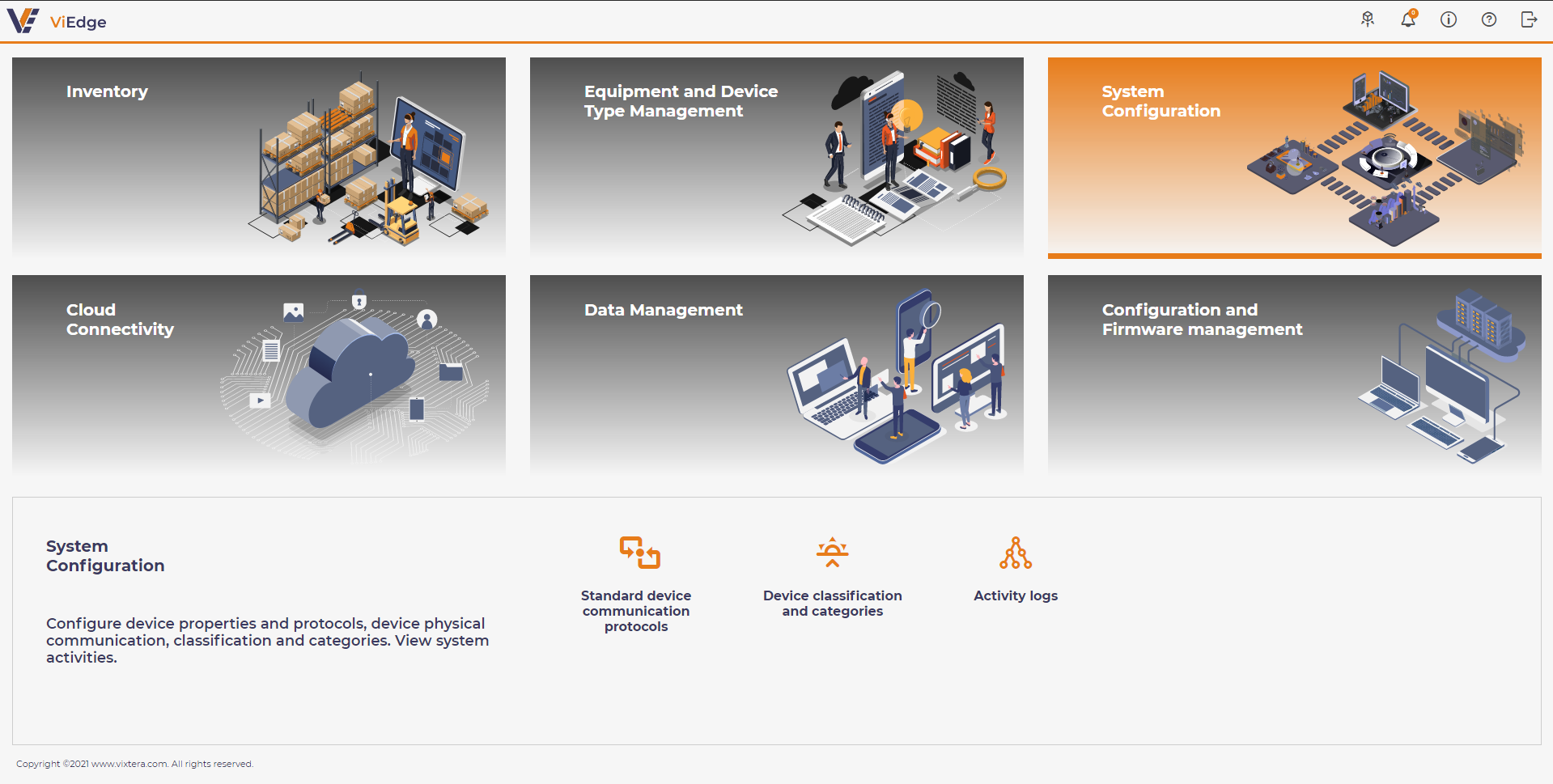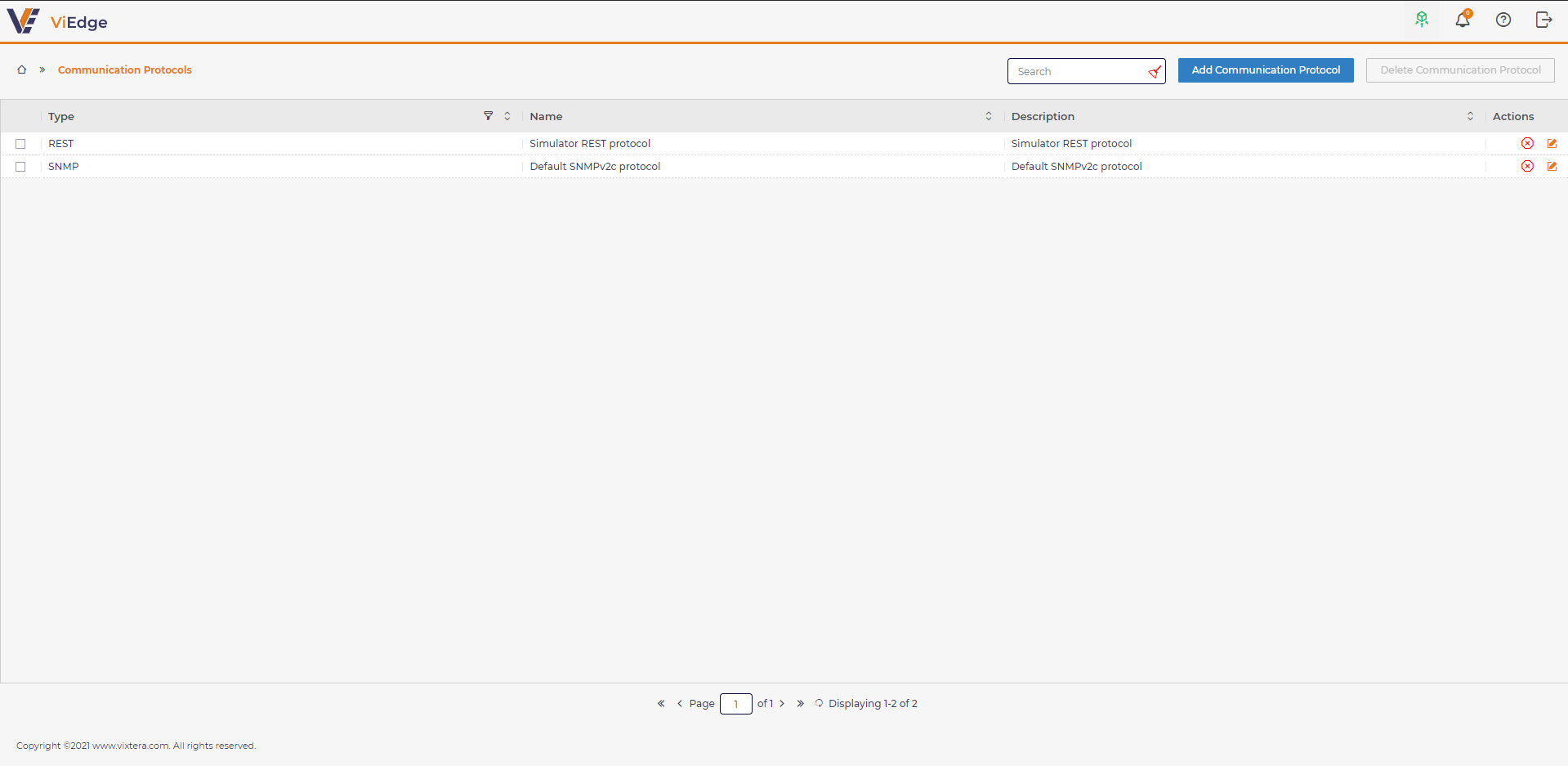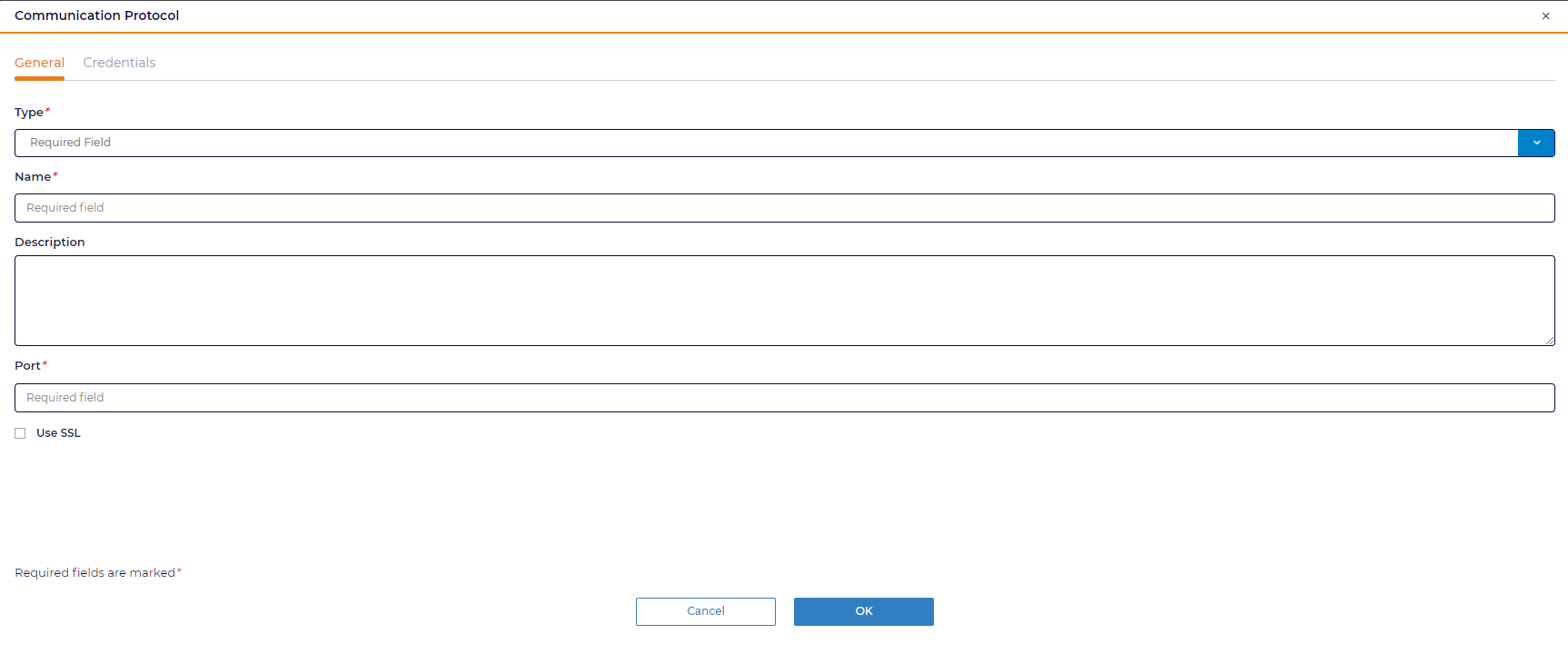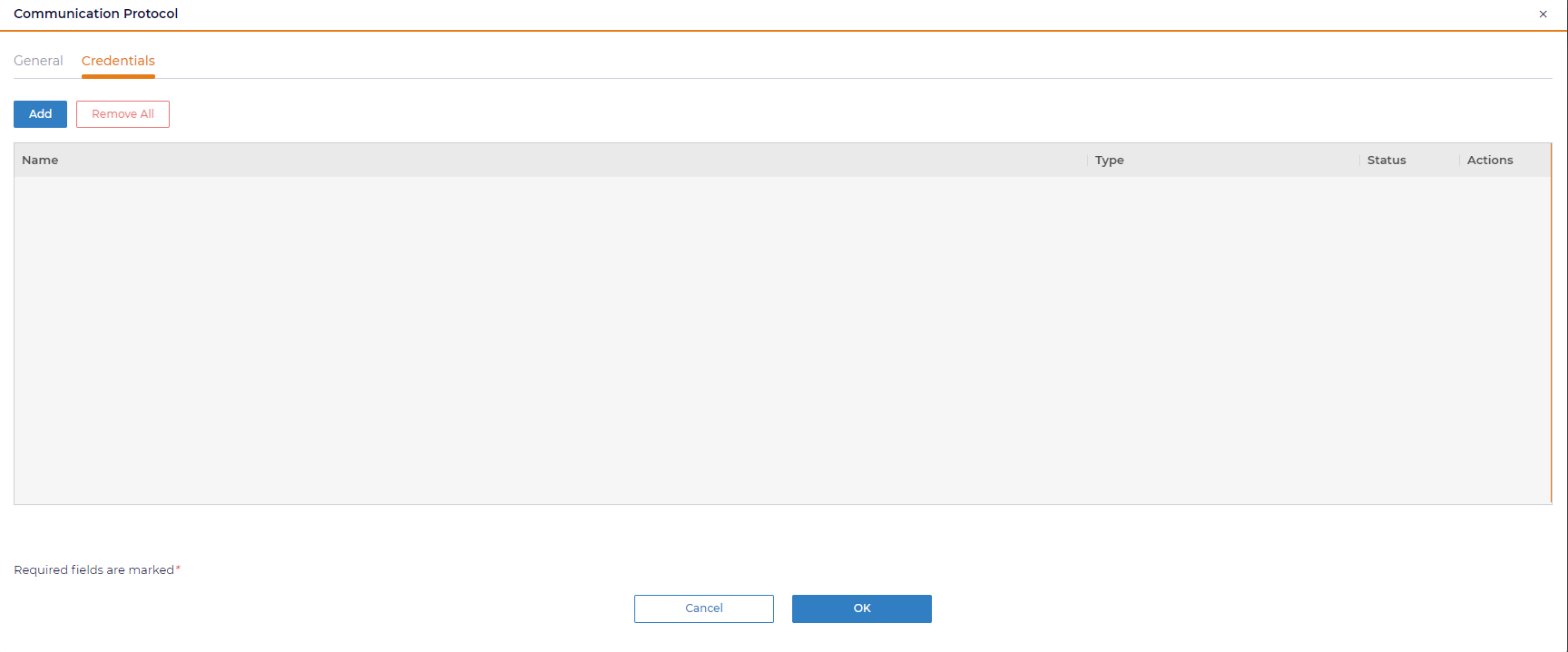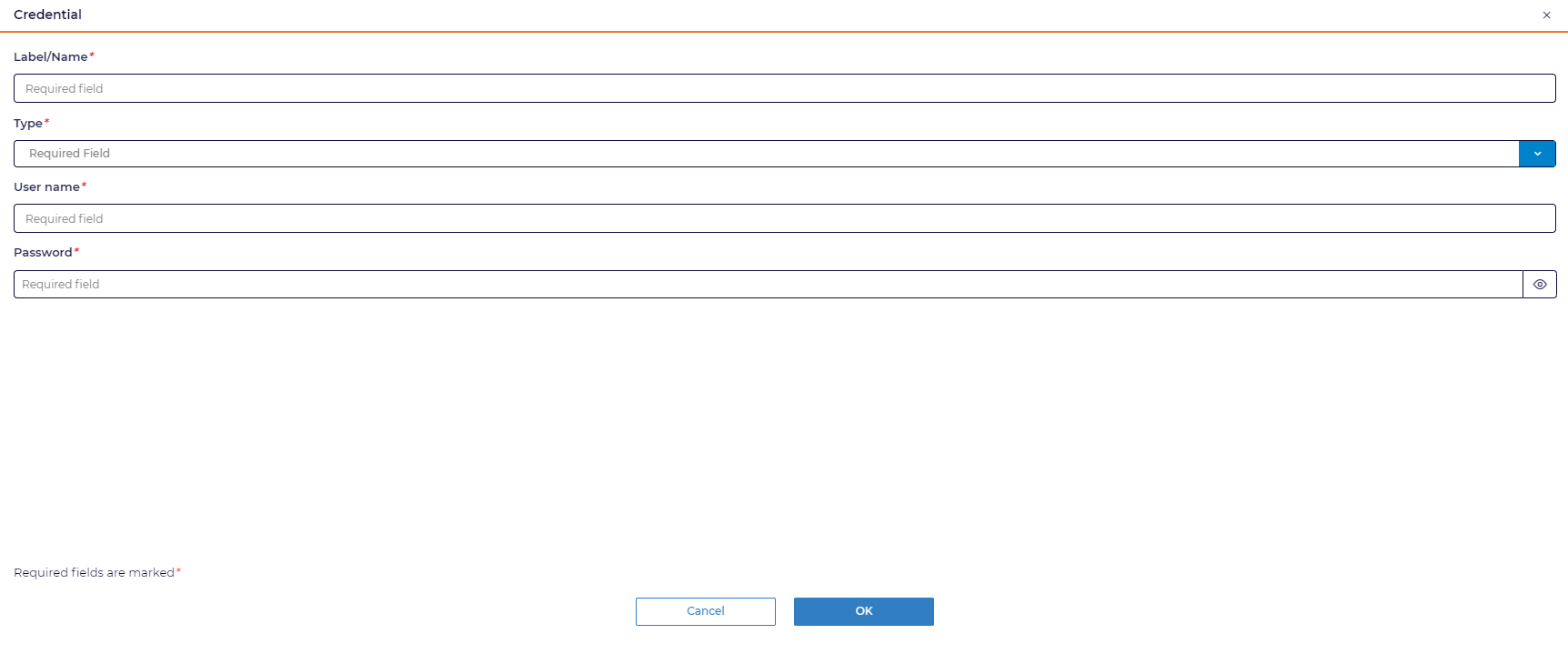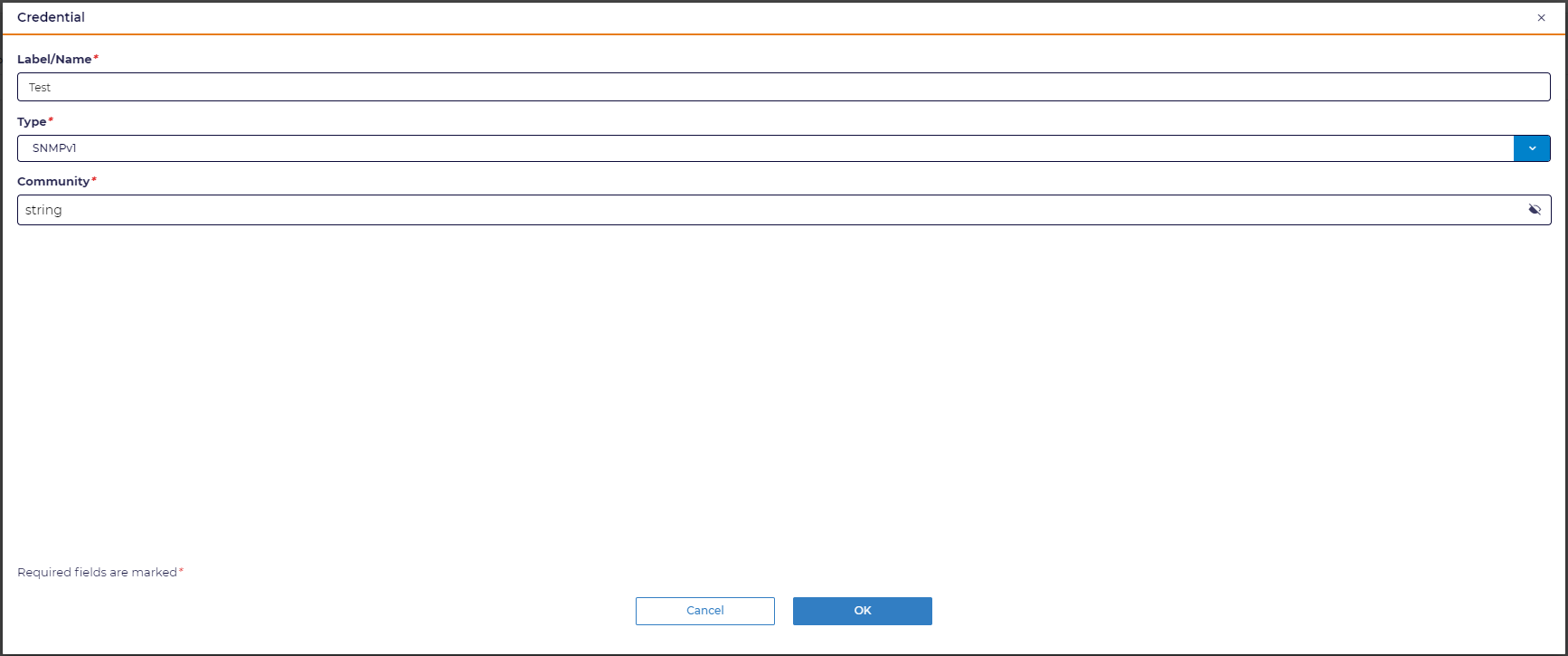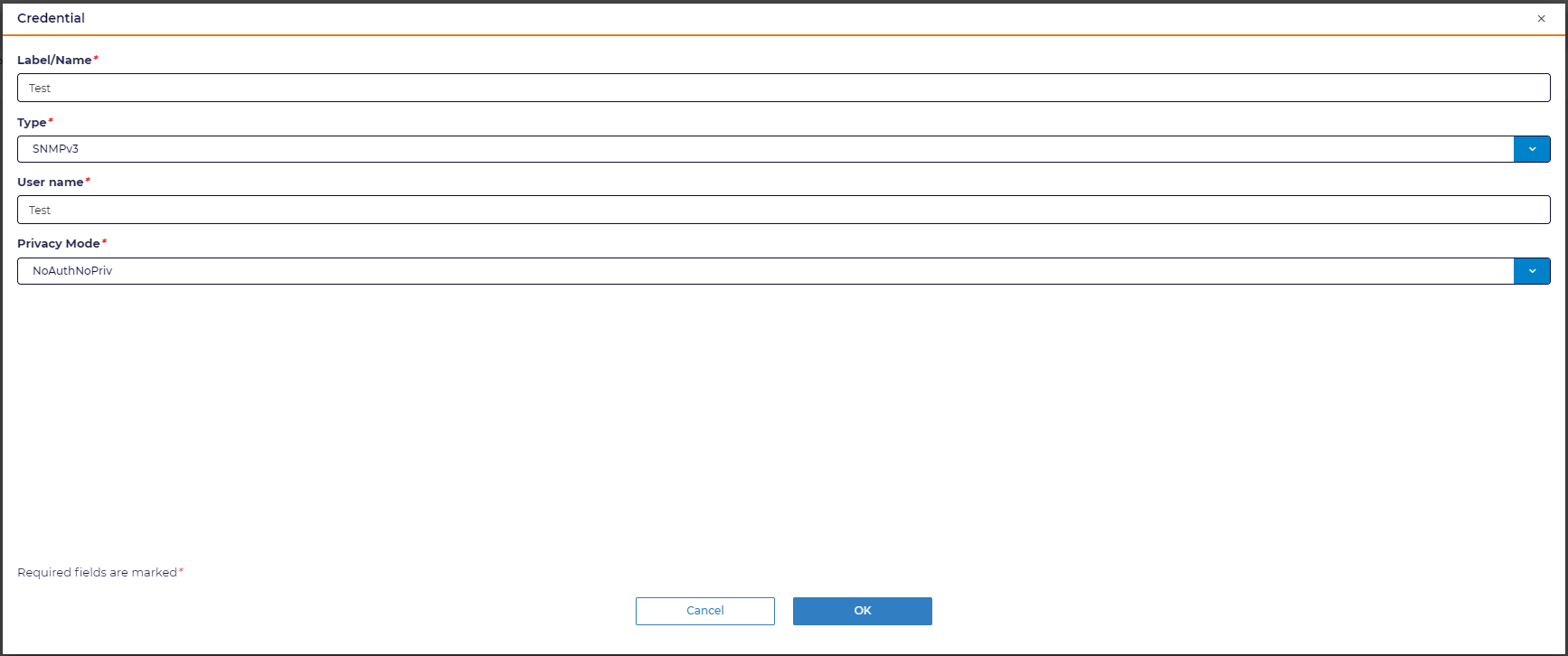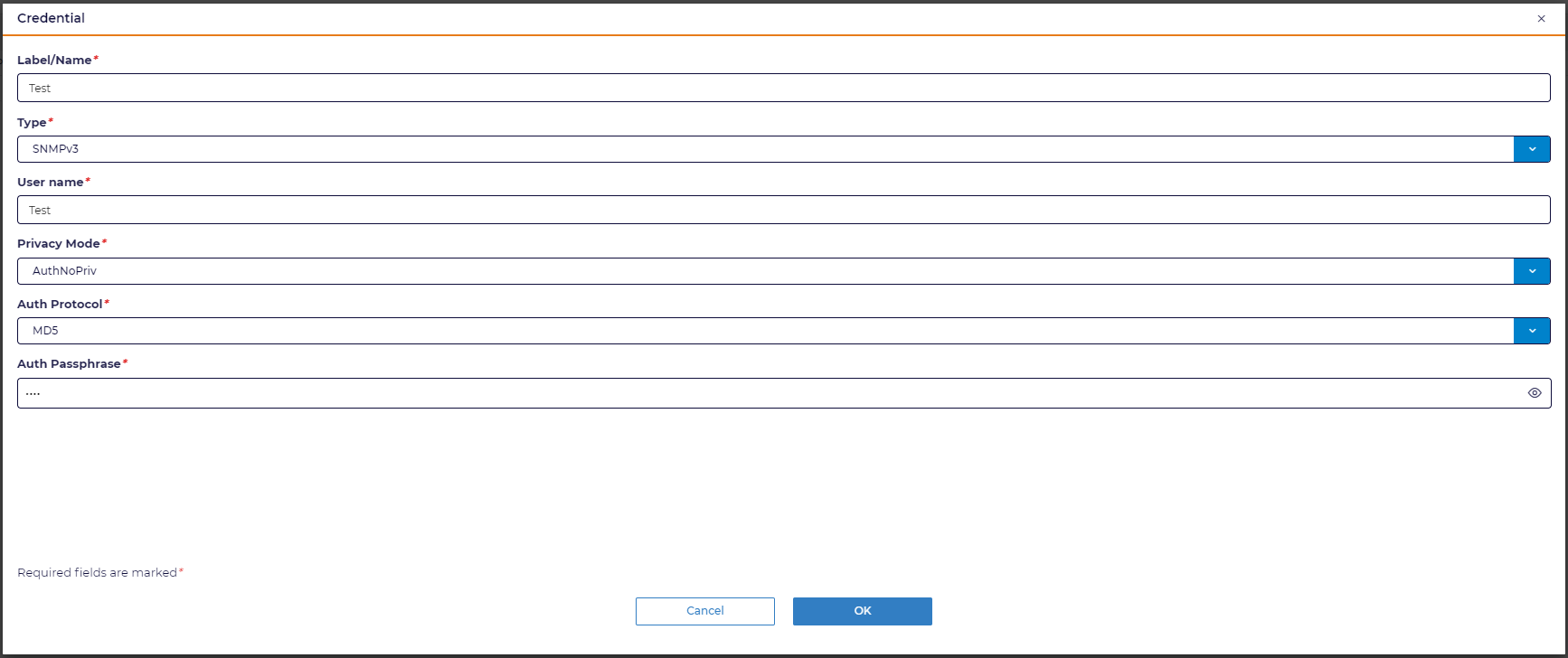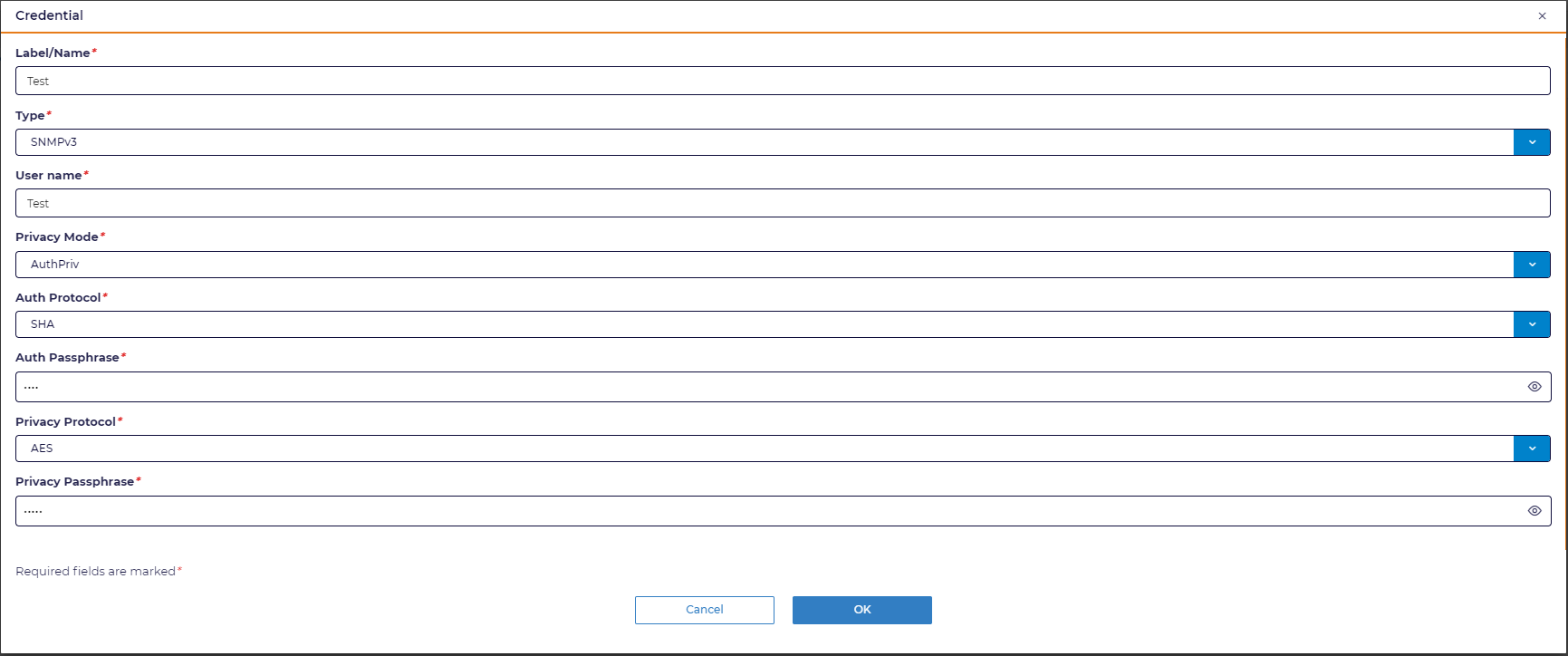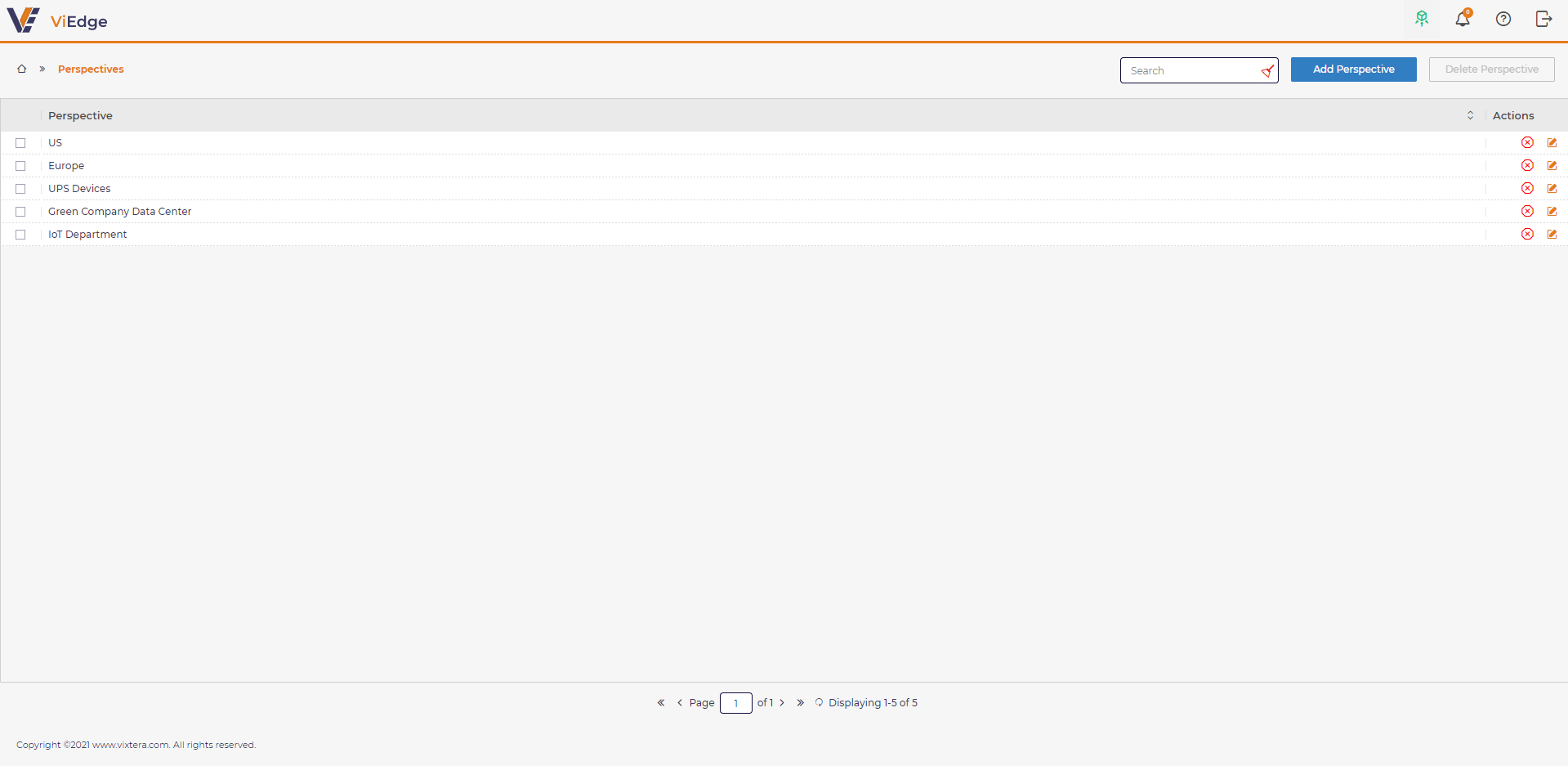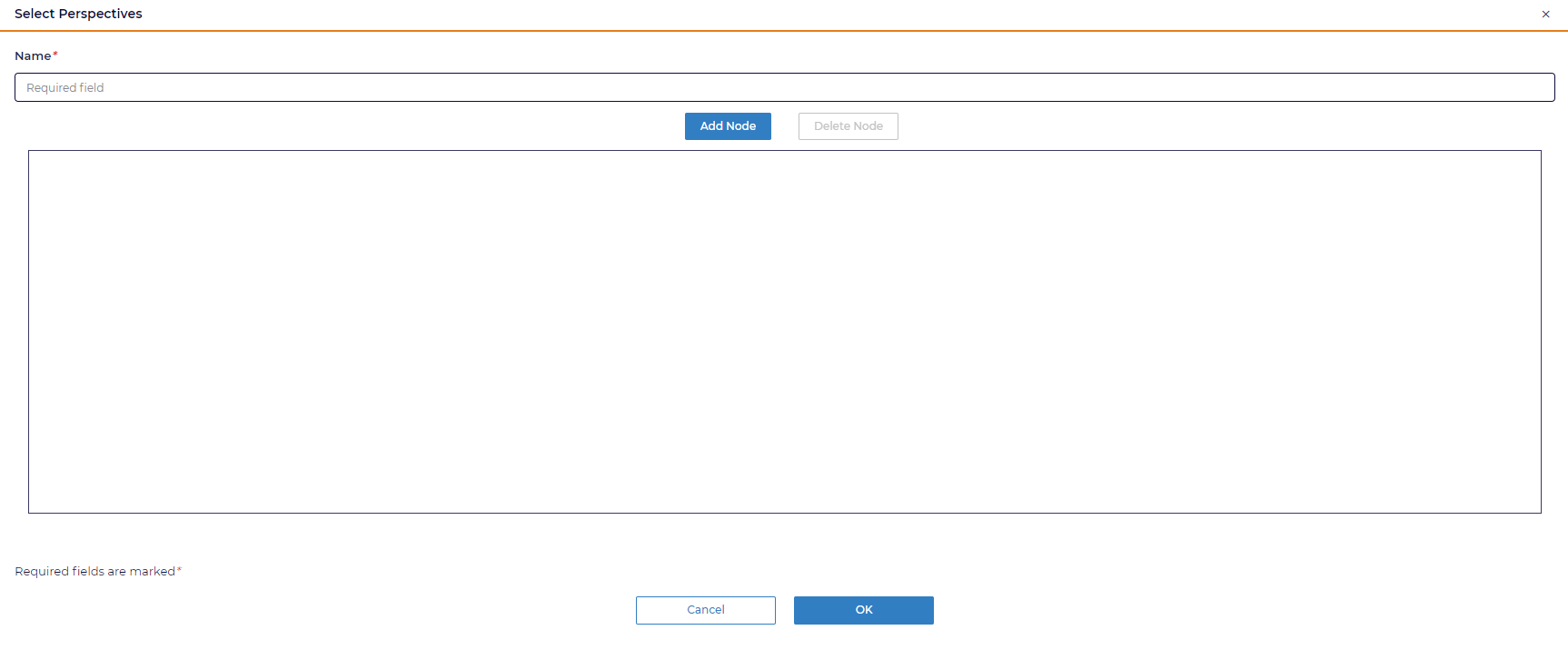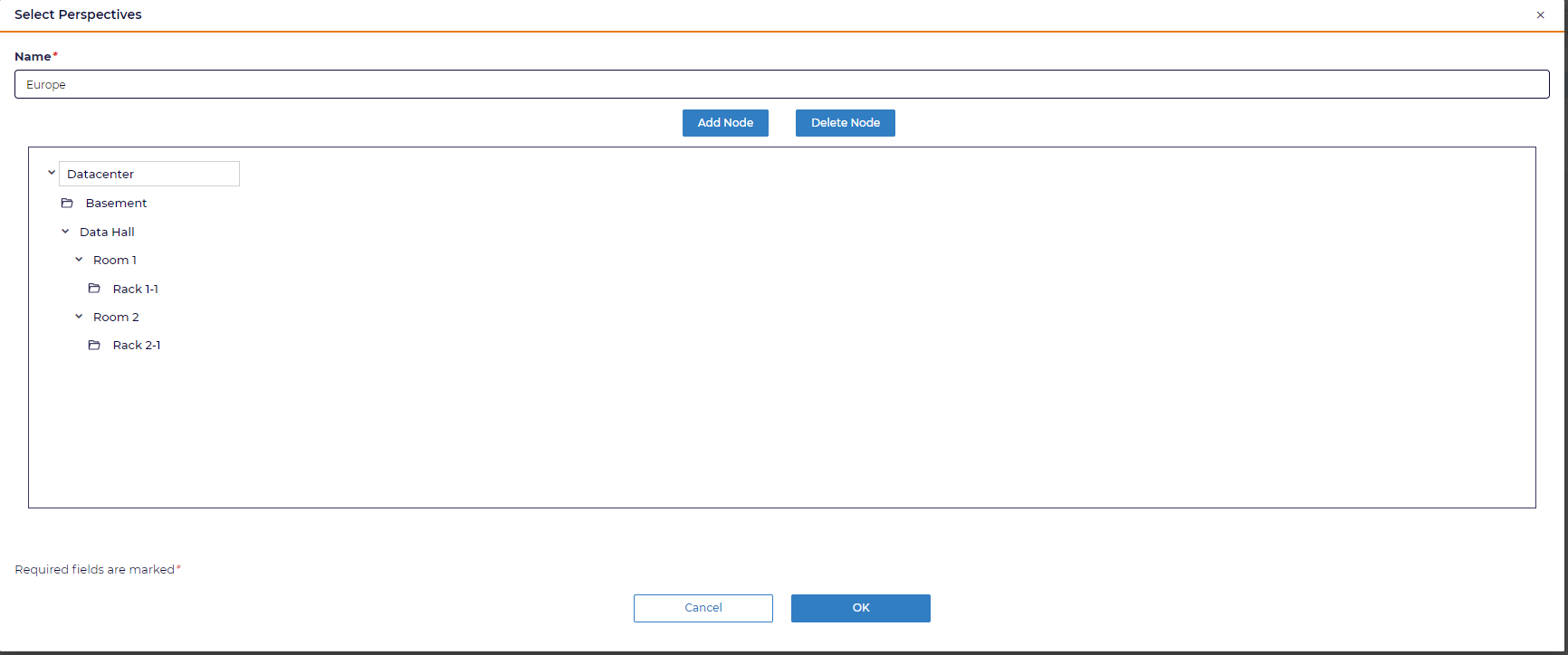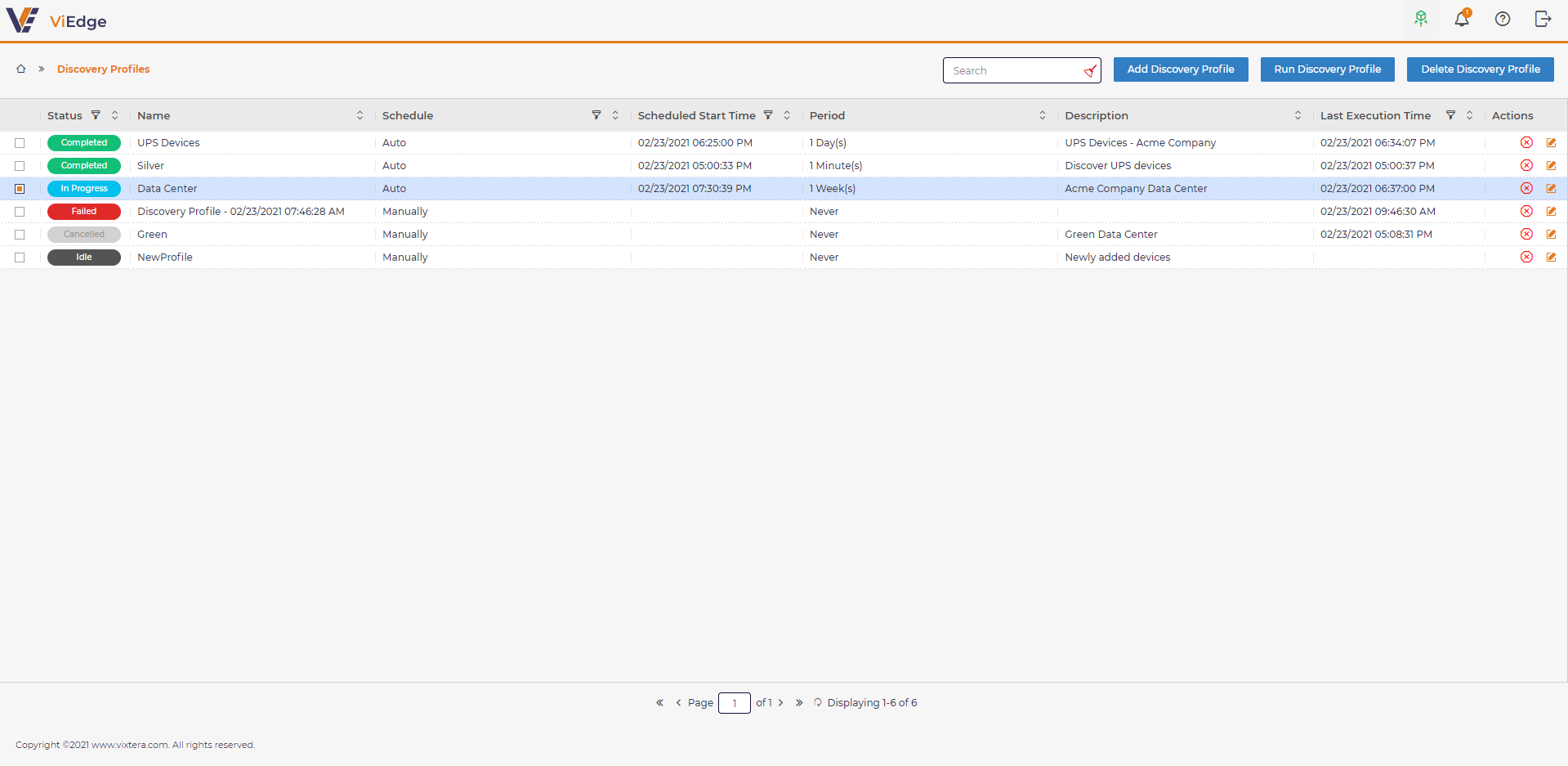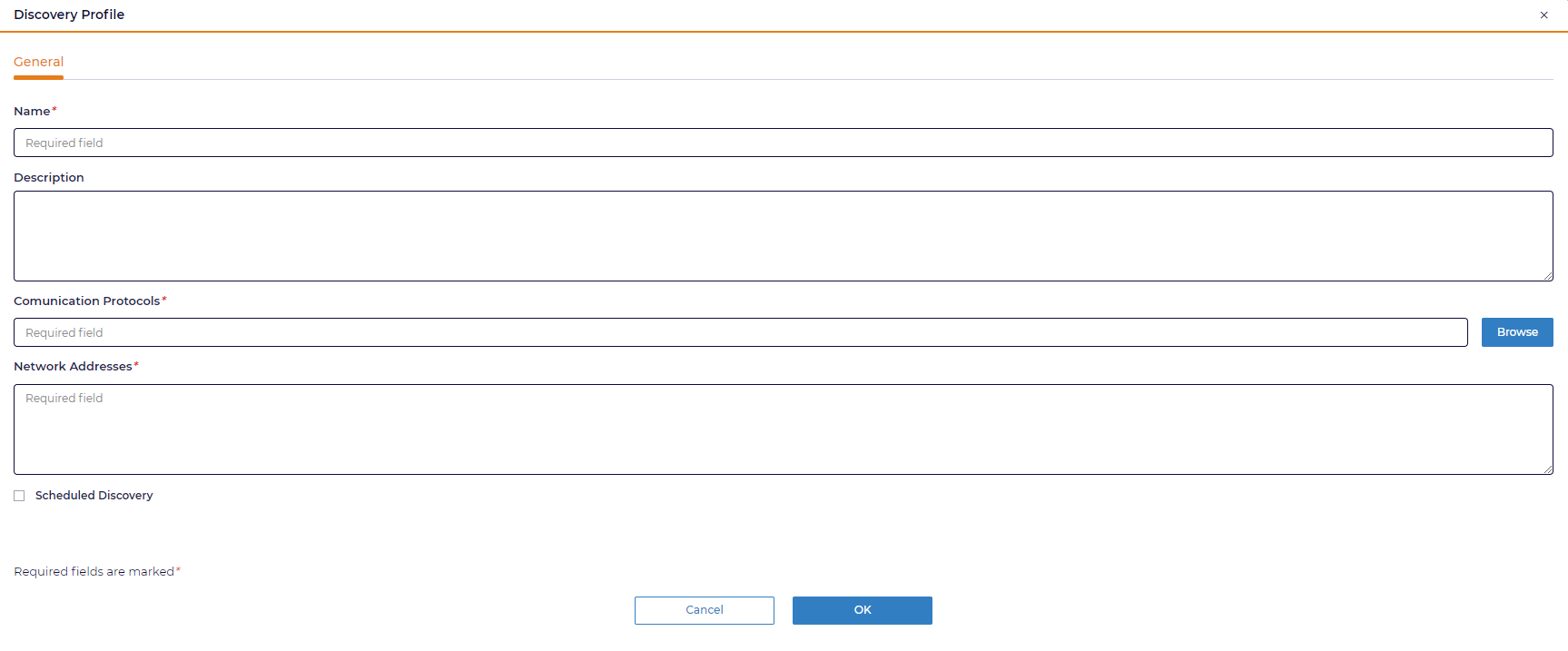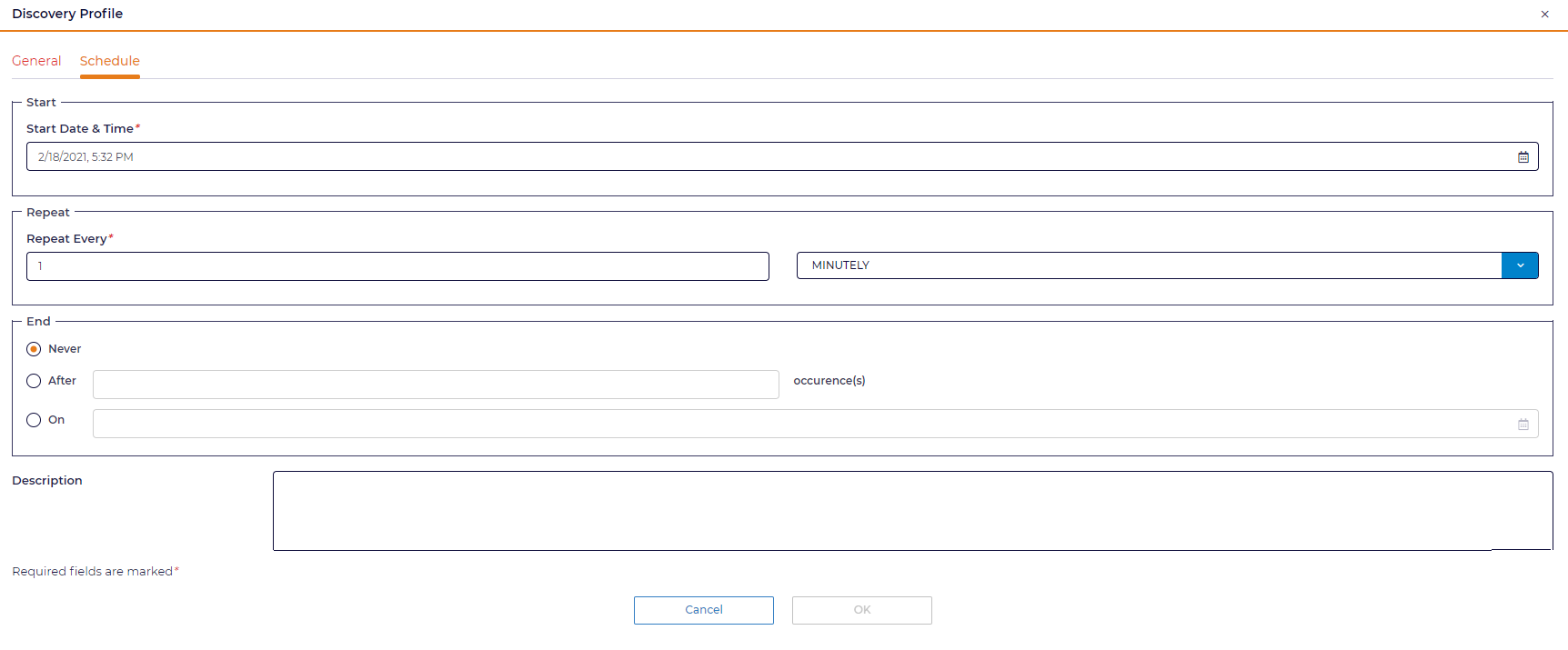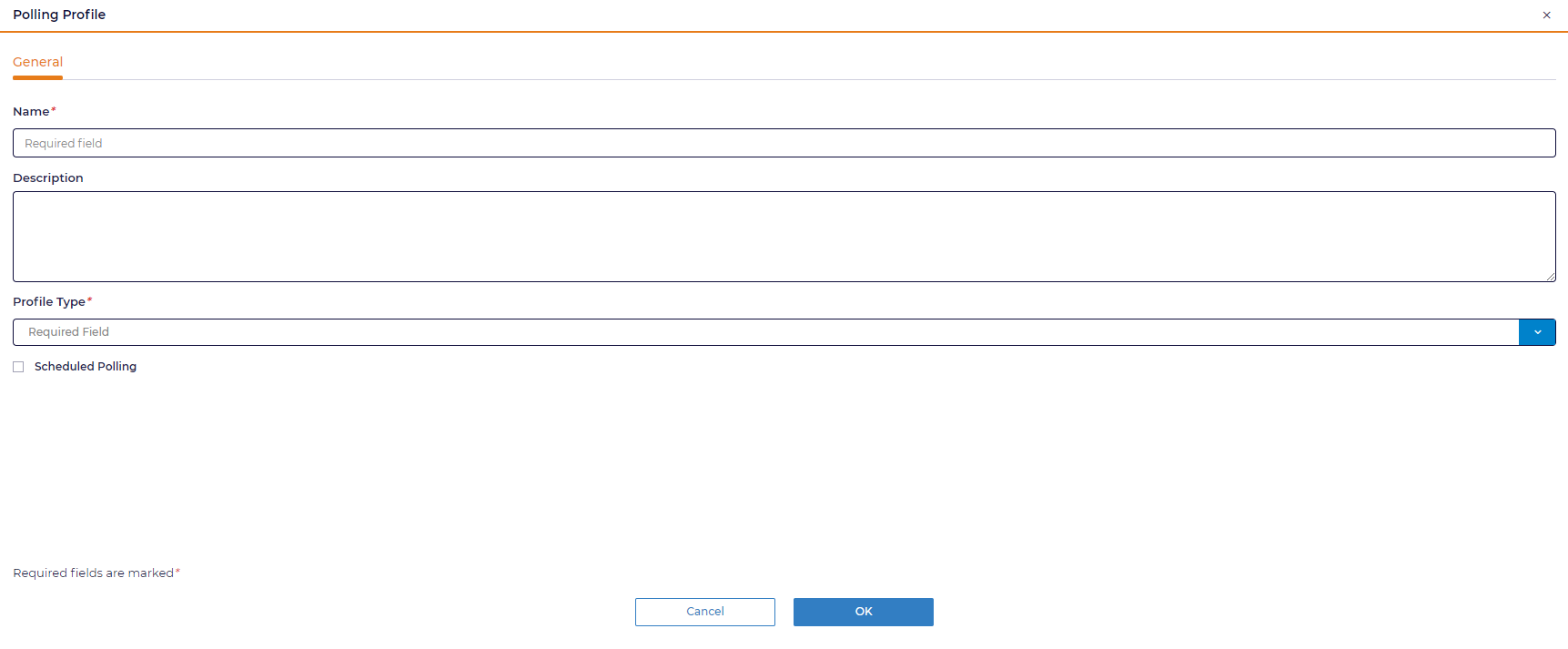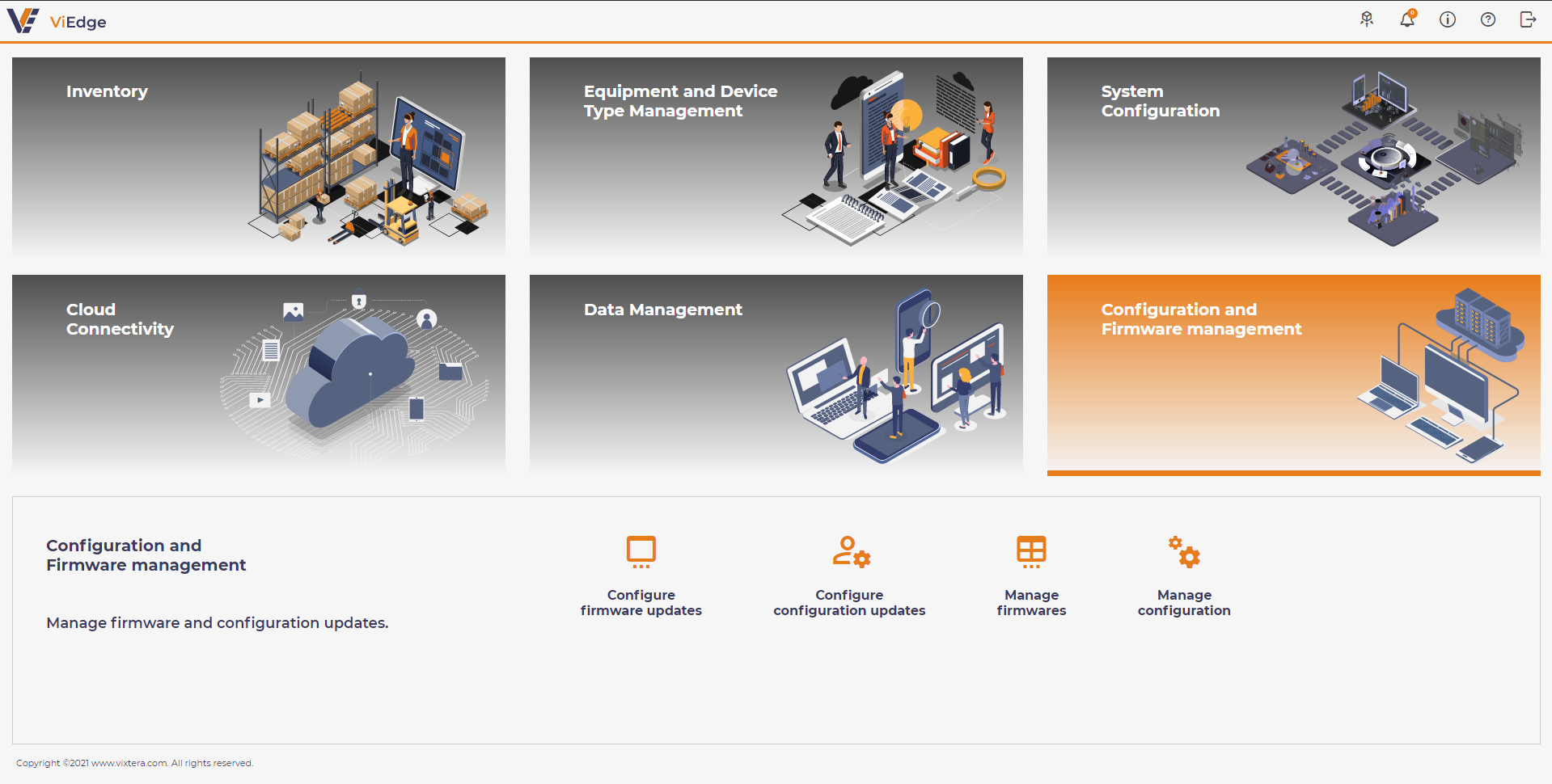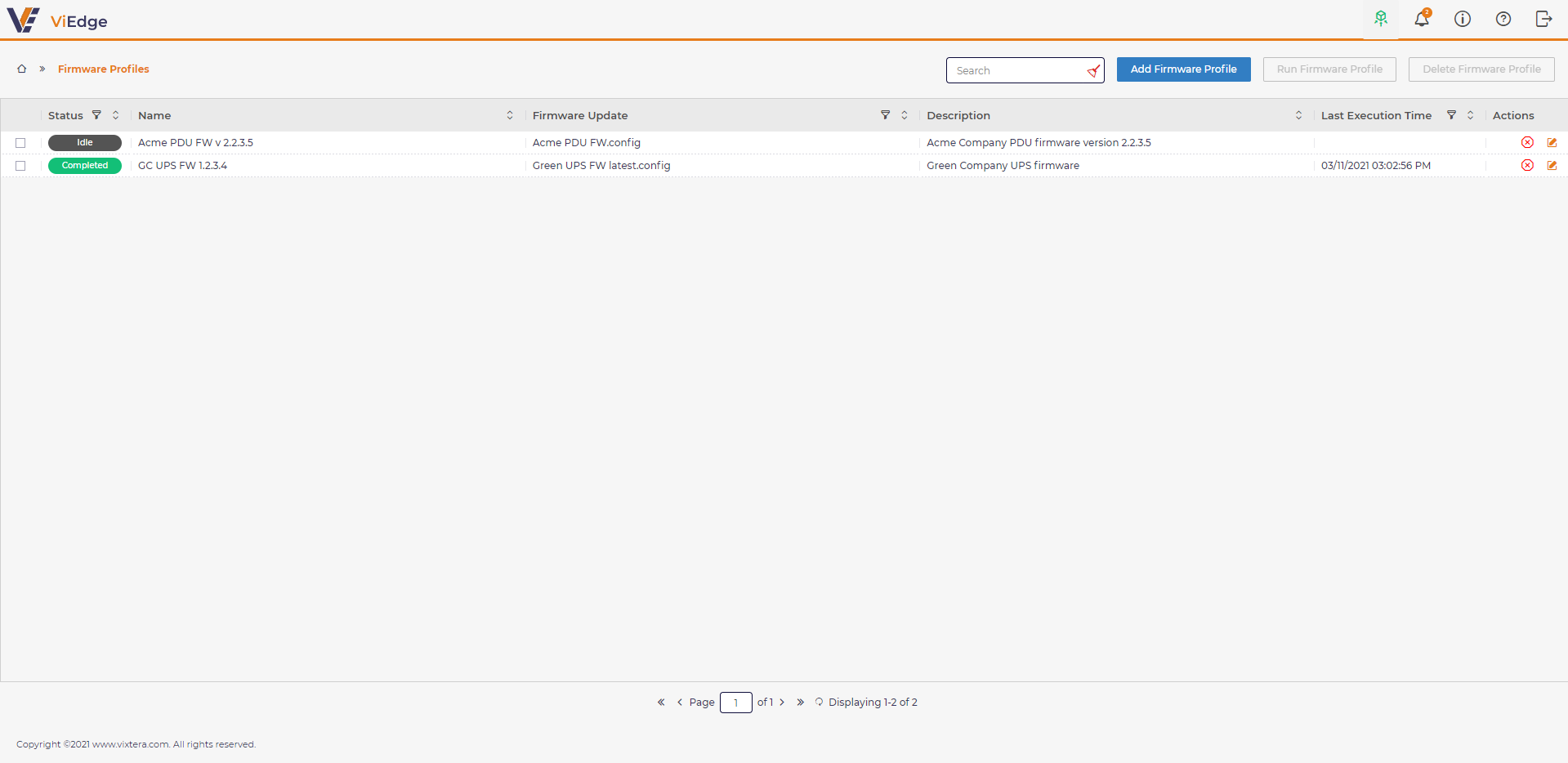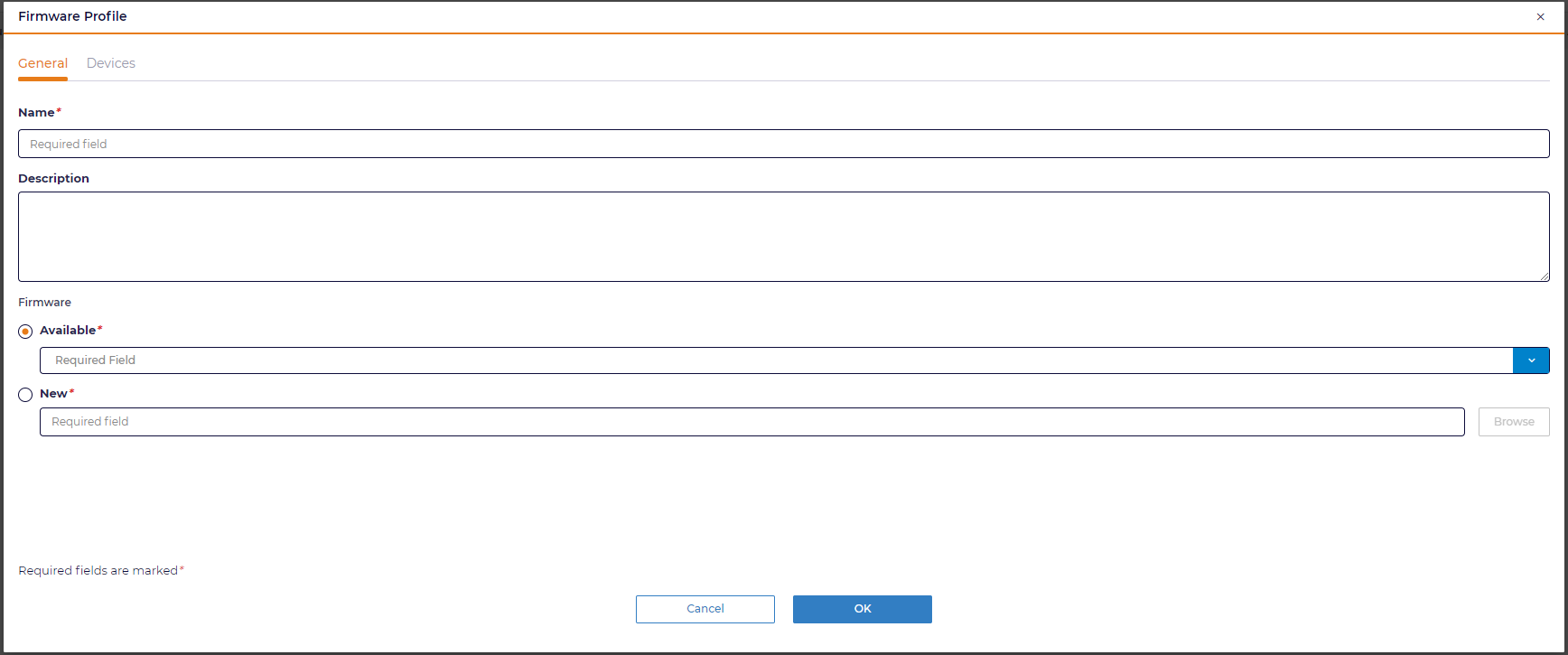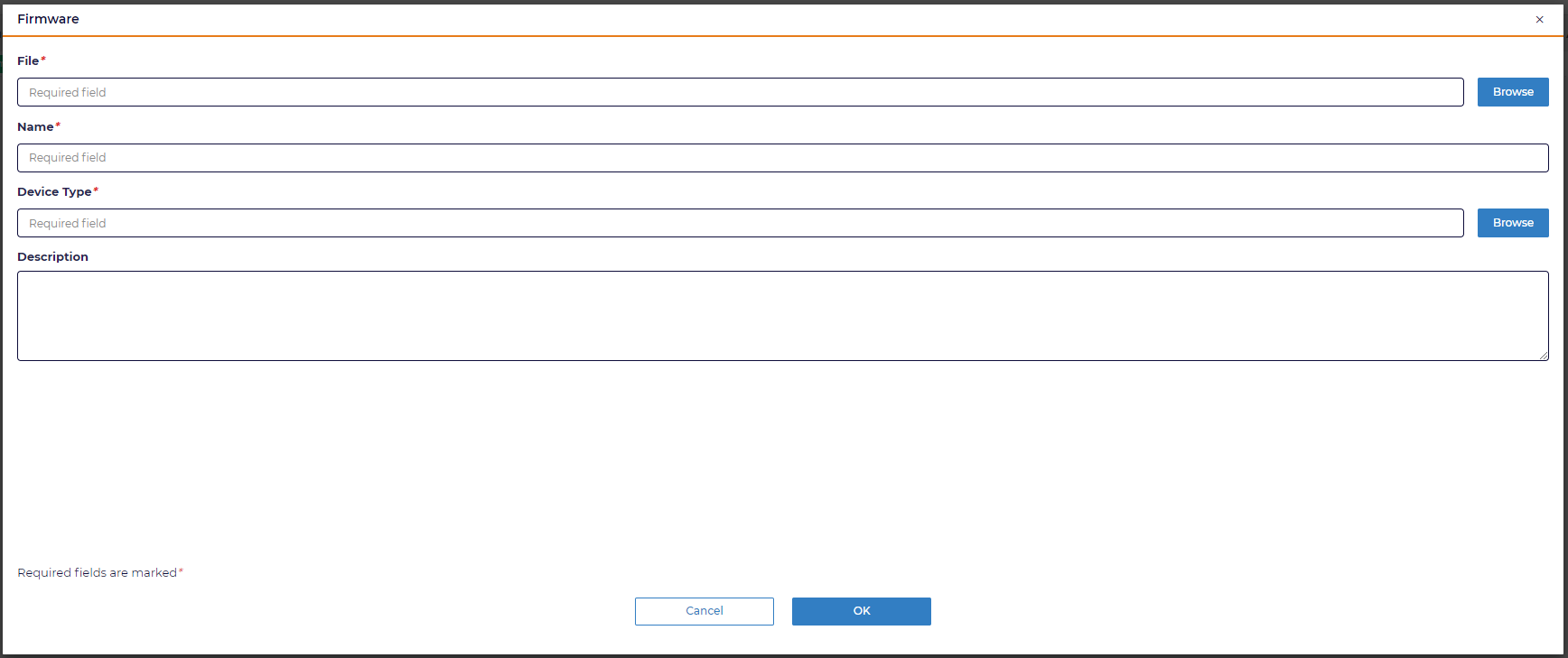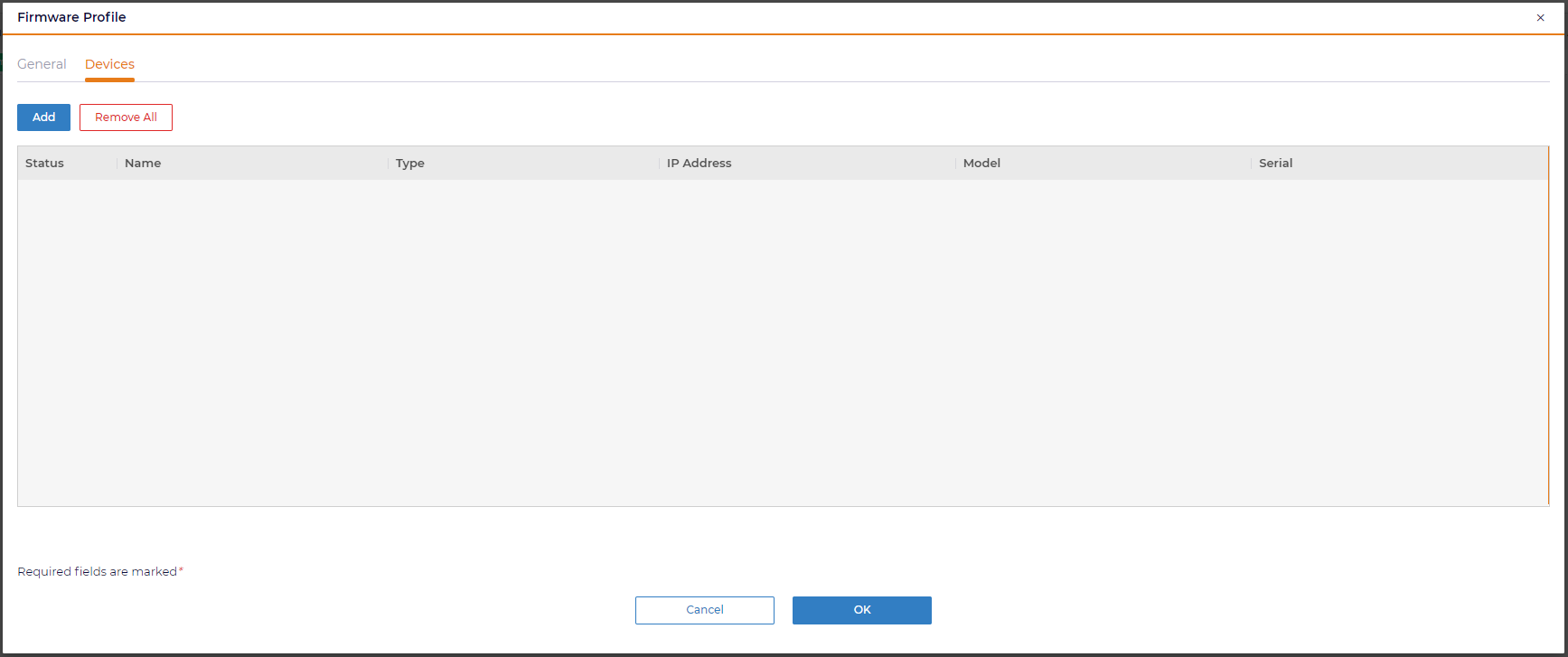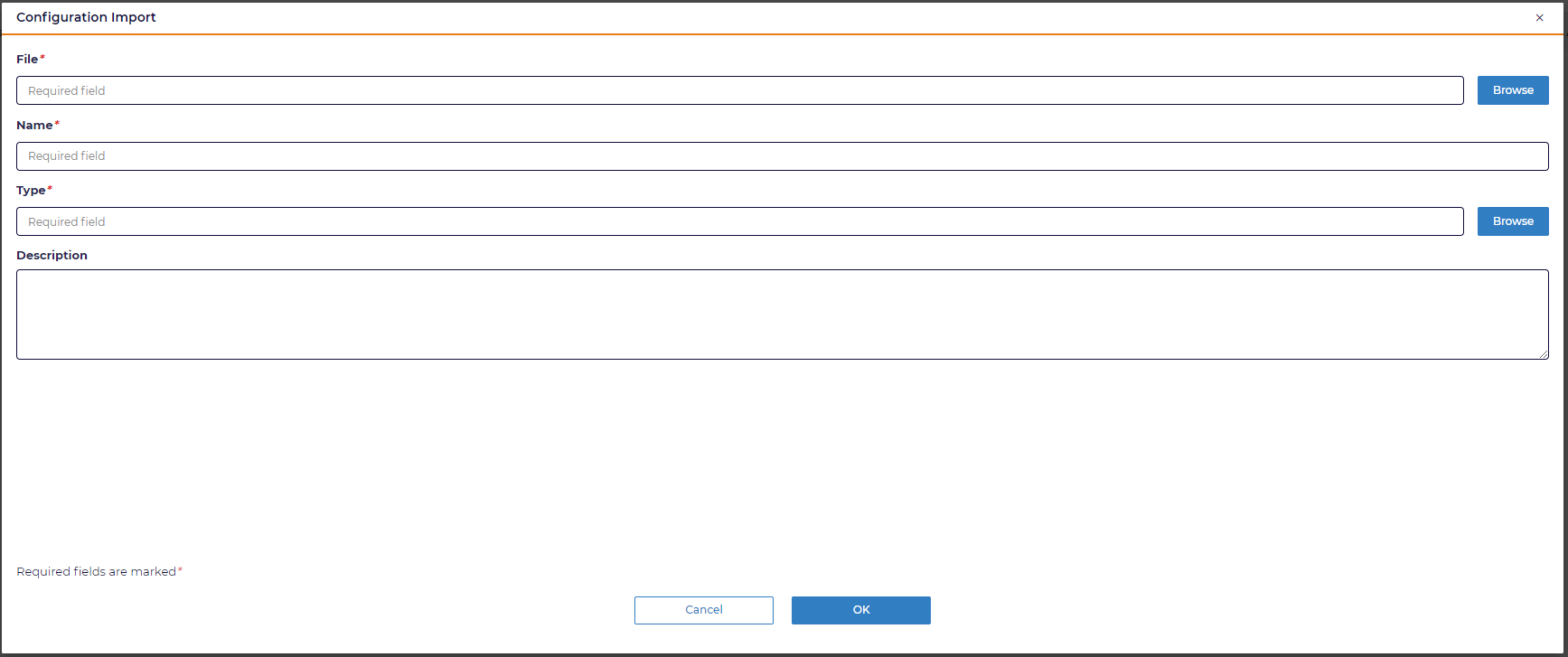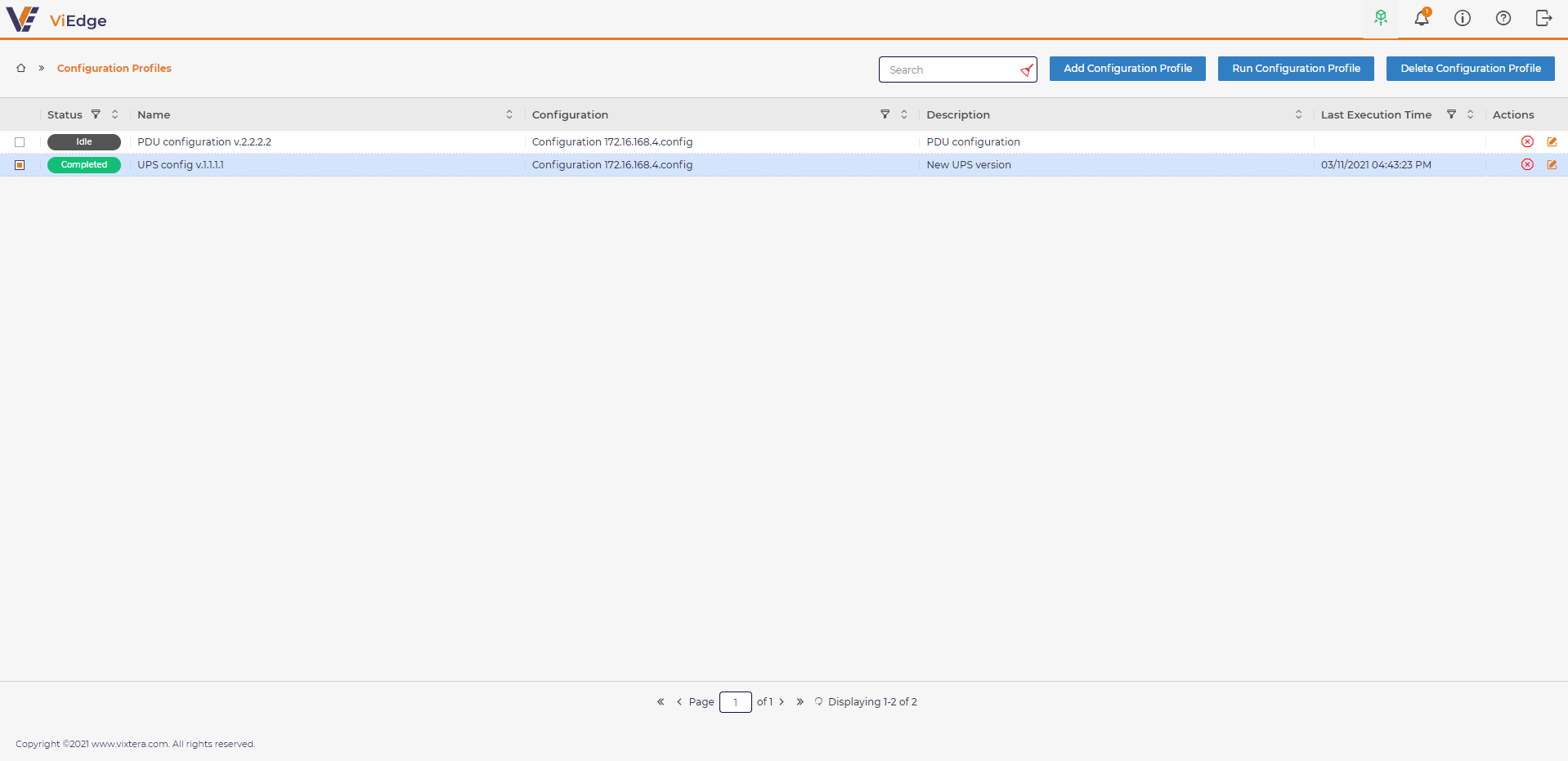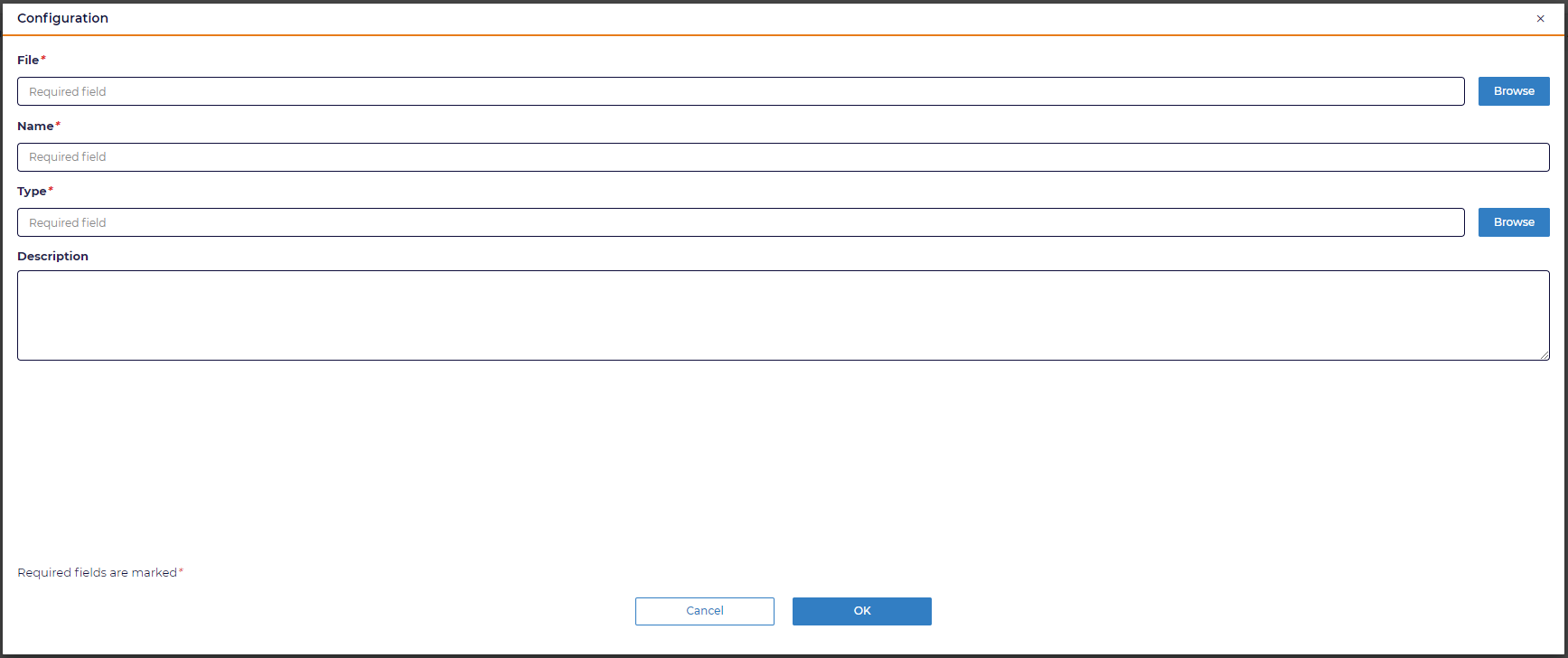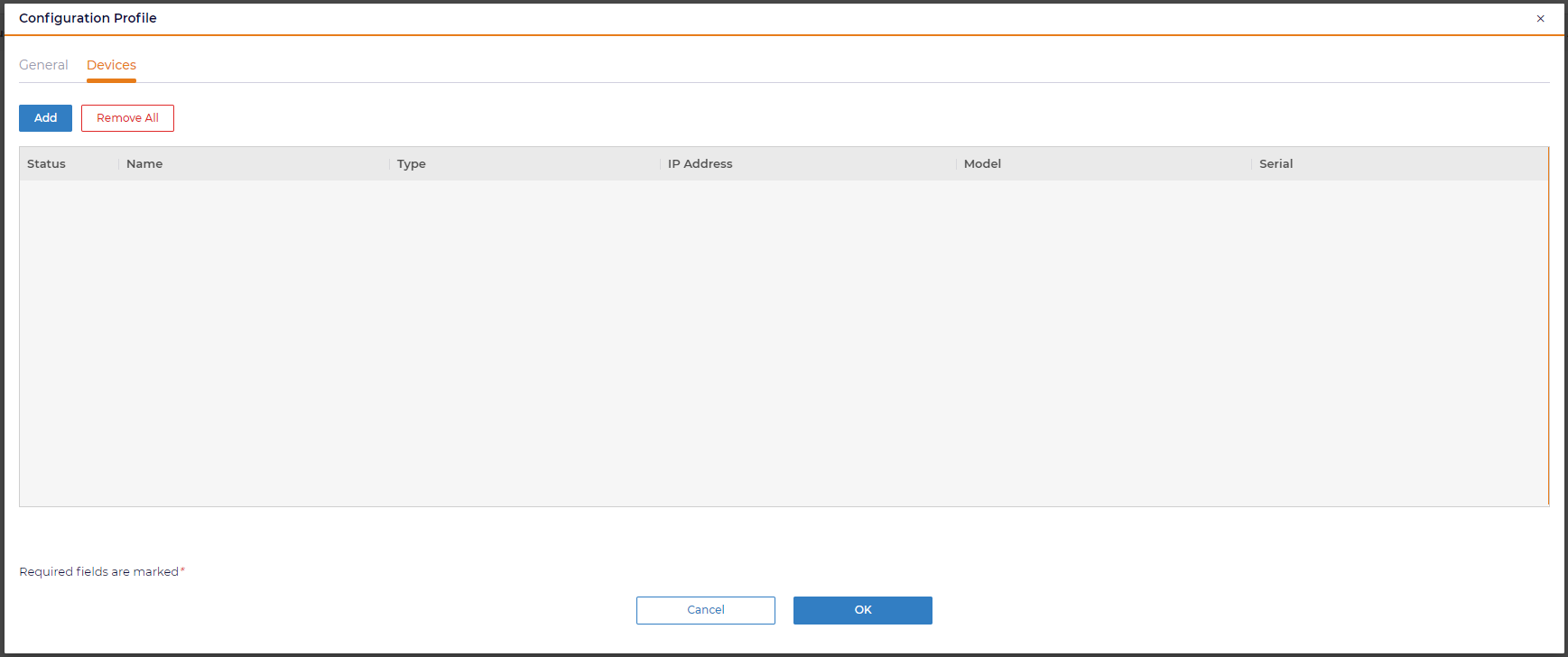Configuring ViEdge
This section describes what each profile is doing and how to create/update a profile. You will learn how to:
-
create communication protocols
-
create and run discovery profiles
-
create polling profiles to get data from devices directly or using perspectives
-
work with firmware and configuration versions
Communication protocols
Standard device communication protocols are available from the main Dashboard in System Configuration area.
By default, REST and SNMP protocols are available for users.
To create a new communication protocol, click Add Communication Protocol and populate the required fields in the General section.
-
Expand Communication Protocol Type dropdown and select a required type of protocols:
SNMP, REST, SSH, OBIX
-
Fill in manadatory fields Name and Port
Secure Sockets Layer (SSL) is also supported, but it is not mandatory. Select a Use SSL checkbox if you need it.
A user is able to add Credentials for Communication Protocol.
Depending on communication protocol type, for example, REST, SNMP, SSH or OBIX types, different fields of credentials are required.
-
For SNMP protocol different types are available:
-
SNMPv1/SNMPv2
-
-
SNMPv3
Expand Privacy Mode dropdown and select a required type:
-
NoAuthNoPriv
-
AuthNoPriv
Select required Auth Protocol: MD5 or SHA
-
AuthPriv
Expand Privacy Protocol and select one of the protocols:
DES, AES, AESS192 or AES256
Perspectives
Perspectives are in Device classification and categories in System Configuration.
Perspective is a logical grouping used to classify devices and define categories. The user, at his discretion, creates perspectives, for example, as an association by a location, a device type or a business unit. The perspective creation is a part of System Configuration.
Initially discovered devices are part of Unassigned grouping in Perspective Explorer.
To create a new perspective, a user clicks Add Perspective.
By clicking Node a user is able to create a desirable perspective structure.
Discovery
Network device discovery is a device search within the specified network range. To create a discovery profile, you need know a communication protocol and determine network address as IP range or IP list.
To create a new discovery profile, a user clicks Add Discovery Profile
A user is able to configure discovery schedule.
Polling
To get data from device sensors, ViEdge provides polling mechanism for it in Configure measurement polling.
To add a polling profile, a user should click Add Polling Profile.
A user is able to set profile types:
-
All devices
-
Perspective
-
Device List.
Devices can also be polled at a regular interval to ensure that their status is up-to-date. Polling also ensures that all discovered devices are reachable.
The results of polling can be viewed at View Sensors menu in Inventory.
Firmware management
ViEdge supports mass firmware updates. Select Configure firmware updates.
Available Firmware profiles are available in the view:
To add a new profile, a user should click Add Firmware Profile.
Firmware can be selected within available ones or create a new one.
To complete Firmware Profile, target devices should be added.
To execute Firmware Profile, a user should select a required profile and click Run Firmware Profile.
To edit a firmware profile, a user should select

in a column

To import firmware, a user should go to Manage firmwares at Main dashboard.
Avaialable firmware view is:
![]/[link=_images/config_firmware/firmware-grid.png](_images/config_firmware/firmware-grid.png)
By clicking Import Firmware, a dialog appears.
Select a file, device type, add a name and save a firmware version.
Configuration management
ViEdge supports Mass configuration. A user should select Configure configuration updates.
Configurations profile view:
To add a new configuration profile, a user should click Add Configuration Profile.
Configurations can be selected within available ones or create a new one.
To complete Configuration Profile, target devices should be added.
Profile statuses
There are next profile statuses applicable for
Discovery, Polling, Firmware and Configuration profiles
-
Idle - the profile is newly created or updated and not run yet
-
In progress - the profile is executing
-
Completed - the profile completed successfully
-
Cancelled - the profile was cancelled by a user or interrupted by timeout
-
Failed - the profile execution failed
-
Fix me- the profile dependencies was removed by a user (i.e. devices, firmware or configuration files, etc.)
Execution details can be found in Logs. Broken profiles can be fixed manually by providing required dependencies
